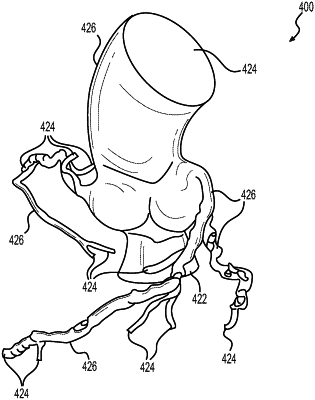| CPC G16H 50/30 (2018.01) [A61B 5/02007 (2013.01); A61B 5/4848 (2013.01); A61B 5/7278 (2013.01); G16H 30/20 (2018.01); G16H 50/50 (2018.01)] | 17 Claims |

|
1. A computer-implemented method for determining a blood-flow metric based on adipose tissue, comprising:
determining a patient-specific model of blood flow through anatomy of a patient, the patient-specific model of blood flow including boundary conditions at inflow and outflow boundaries of the anatomy;
determining a patient-specific inflammation index of the anatomy of the patient, the patient-specific inflammation index being based on adipose tissue identified within a predetermined distance of the anatomy, wherein determining the patient-specific inflammation index includes:
obtaining patient-specific medical imaging of the anatomy;
identifying adipose tissue in the patient-specific medical imaging;
determining a quantification of the identified adipose tissue that is weighted based on distance between the identified adipose tissue and a region of interest; and
determining the patient-specific inflammation index based on the quantification;
modifying at least one of the boundary conditions of the patient-specific model of blood flow based on the patient-specific inflammation index; and
determining at least one patient-specific blood-flow metric using the patient-specific model of blood flow with the at least one modified boundary condition.
|